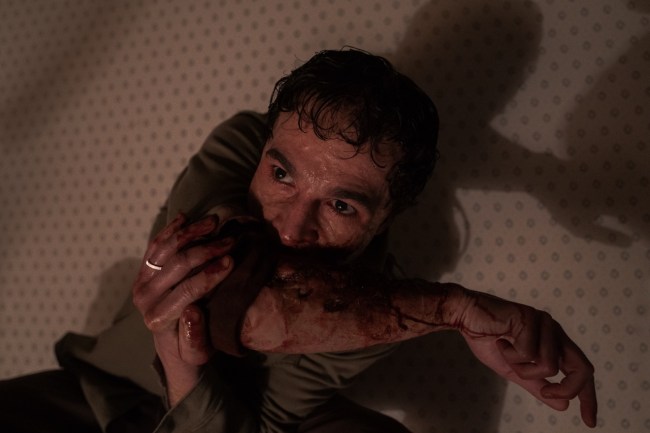When Leigh Whannell took on the task of directing a new “Wolf Man” film, he knew it was paramount to create a werewolf that could stand apart from the creatures of previous films – but he also knew he had to satisfy genre enthusiasts who might come to “Wolf Man” as fans of everything from Lon Chaney Jr.’s original to John Landis“An American Werewolf in London.”
“I guess I approached it first from the standpoint of, ‘What haven’t I seen yet?'” Whannell told IndieWire’s The Filmmaker’s Toolkit podcast. “When you add this face to the whole portrait hall, you want it to have a distinct look that’s yours.” When Whannell figured out how to thread the needle, he looked at what Christopher Nolan and Heath Ledger did with the character of the Joker in “The Dark Knight.”
“It’s a character that’s so iconic,” Whannell said. “Everybody has an idea of what it is. When the first picture of Heath Ledger came out, it struck me how simple it was. It still felt iconic, but it was its own distinct silhouette. If you looked at a row of portraits of all the jokers would stand apart. And so I used that as a base inspiration for what I was going to do.”
Whannell knew he wanted his werewolf to be more grounded than in most film versions of the “Wolf Man” story, but he noted that “the trick is you also want to keep the ‘Wolf Man’ fans happy. And again, it’s something I think ‘The Dark Knight’ did well. Fans of Joker were happy, but you can’t call it reminiscent of anything. It was its own thing.”
With Nolan and Ledger as inspiration, Whannell began to draw sketches from reality. “I looked online at photos of facial deformities and skin diseases and leprosy and all these things and started building a picture of a more organic, biological version of (the Werewolf),” he said. Once he teamed up with special effects makeup artist Arjen Tuiten, who began his career studying under “An American Werewolf in London” creator Rick Baker, Whannell locked down a design for his title character.
The grounded approach Whannell took to the werewolf design extended to every aspect of “Wolf Man,” a film that deftly balances old-school practical effects and prosthetics with digital effects used deliberately for enhancement. “I let the story guide it,” Whannell says of the choice between going hands-on or digital. “There are some things that only visual effects can really achieve – if I’m writing a scene where an alien craft is hovering over Sydney, I’ll use visual effects.”
That said, as a self-described “child of the VHS era,” Whannell has a deep love for the craft of practical effects and loves making things as tactile as possible. “When I look at a frame that I know is completely CGI, there’s a detachment that happens,” he said. “What I love is when a filmmaker weirdly combines practicality and CGI, which (Denis) Villeneuve does in ‘Dune’.”
One of the most tense scenes in “Wolf Man” is a crash involving a truck filmThe main characters are left dangling from a tree, something Whannell largely shot practically. “The execution of it was difficult,” Whannell said. “It was fun to write, but not to do. We had a truck hanging off a ridge in New Zealand at three in the morning, it’s freezing, and the actors are in harnesses and uncomfortable.” For Whannell, however, the fight is worth it to give the audience something special.
“Movies need these moments,” Whannell said. “You’re looking for the unexpected. I almost look at horror films like an EKG chart, with spikes and dips where you always want to catch the audience on rails.” Calibrating those moments in the editing room proved challenging, though Whannell says just looking at the audience in test screenings is a quick way to determine what works and what doesn’t. “There is a danger when you get so close to something that you can no longer see it. Watching people watch a film, it’s amazing what you learn just from people’s body language.”
The trick, according to Whannell, is knowing when to incorporate others’ suggestions and when to stick to your guns. “I’m pretty picky about what I listen to and what I don’t,” Whannell says. “It’s all up to you. It’s all subjective, and I use myself as a barometer. When you make a movie, that’s your obsession. This is the version of ‘Wolf Man’ I wanted to make, this is the version I would like to see .So you have to use yourself as a guide and be a little stubborn.”







